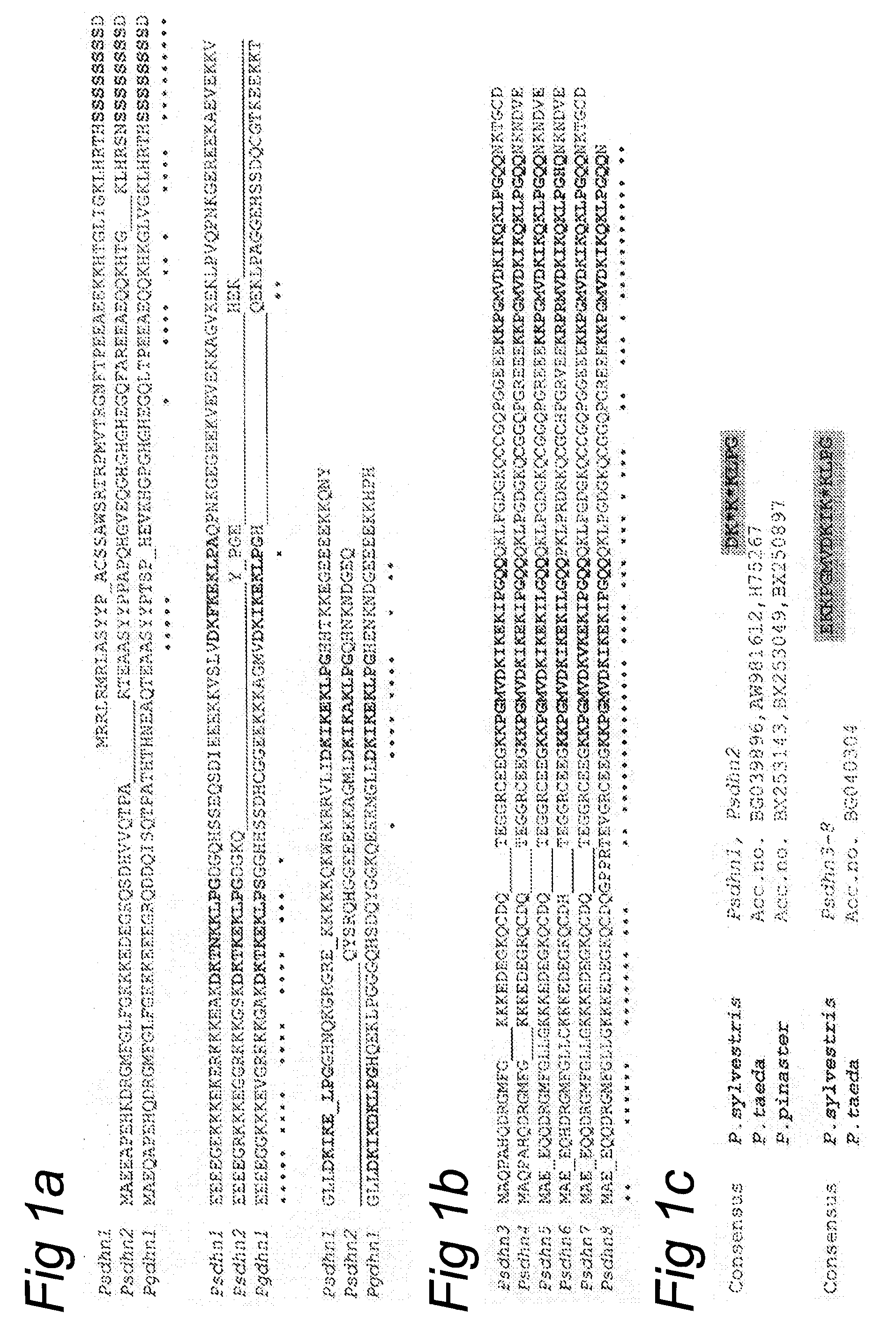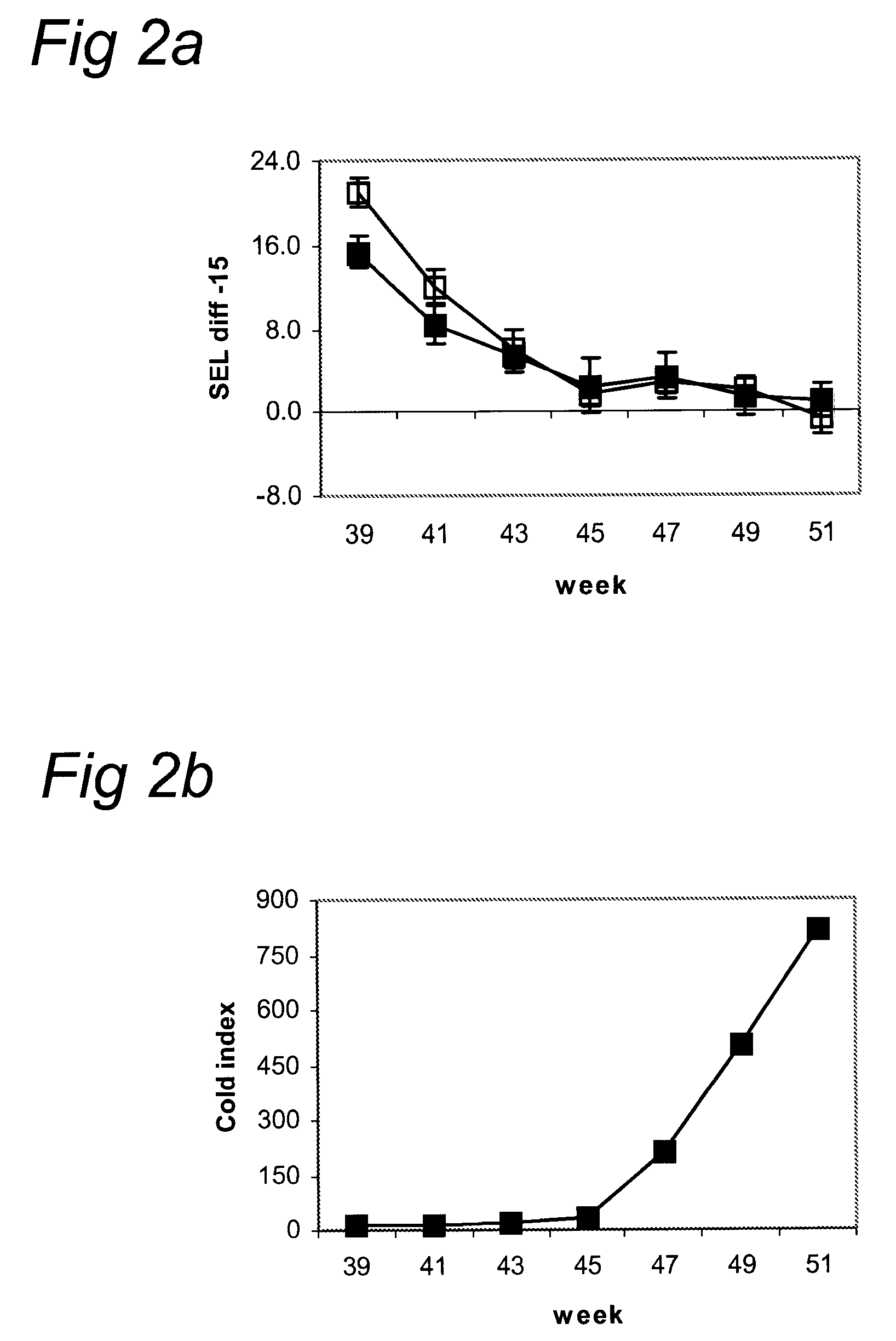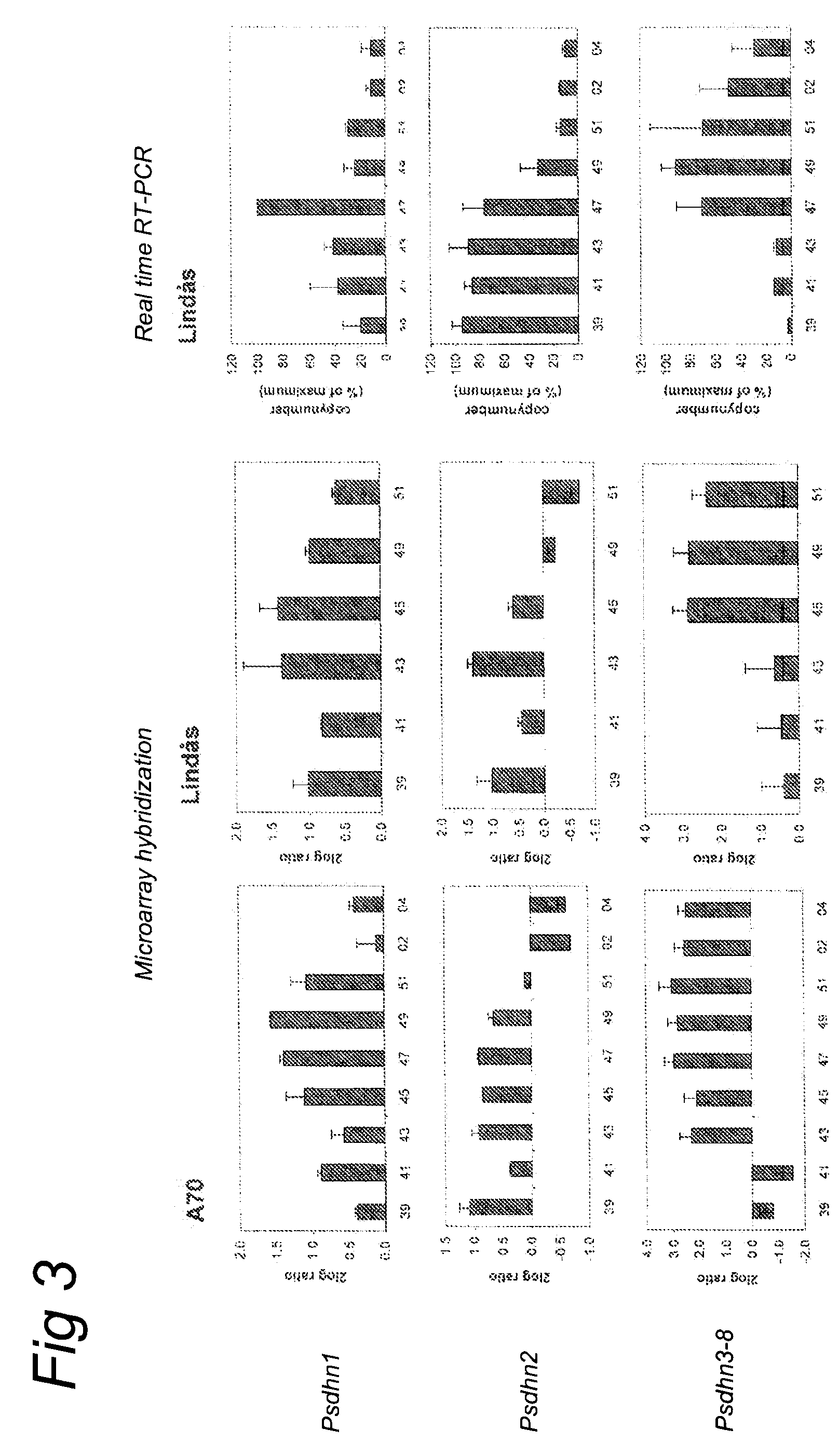Methods and means for determining and conferring stress tolerance in plants
a stress tolerance and plant technology, applied in the field of plant biology, breeding and agriculture, can solve the problems of limited application of ysub>2/sub>k type dehydrins for conferring cold tolerance, little information about functional differences between the various types of dehydrins, etc., and achieve the effect of increasing stress tolerance and determining and/or conferring stress toleran
- Summary
- Abstract
- Description
- Claims
- Application Information
AI Technical Summary
Benefits of technology
Problems solved by technology
Method used
Image
Examples
example 1
Introduction
[0053]Pinus sylvestris (Scots pine) seedlings display a strictly periodic growth pattern over the year. When seedlings are placed under different light regimes, growth cessation and bud-set always takes place (Christersson 1978, Ekberg et al. 1979). Growth cessation and frost tolerance develop in parallel (Dormling 1993) and are triggered by both short days and low temperature, especially in one-year-old seedlings (Christersson 1978, Repo et al. 2000).
[0054]For seedlings of Pinus sylvestris different stages of hardening have been reported. As growth ceases the bud enters a stage of ecodormancy or quiescence (Dormling 1993, Lang 1987). This stage is characterised by intermediate frost tolerance levels. The timing of this first stage varies among pines originating from different latitudes. Growth ceases earlier in northern provenances compared to southern provenances (Repo et al. 2000). This seems to be directly influenced by differences in photoperiod (Ekberg 1979). As ha...
example 2
Characteristics of the Physiological Status of the Pine Seedlings Used for Transcriptional Profiling
[0063]Results of frost tolerance measurement of apical shoots for both pine provenances, A70 and Lindås are shown in FIG. 2. At week 39 the SEL diff-15 value was found to be higher in A70 compared to Lindås. From week 43 on, there is no significant difference between the two provenances examined. Both remained frost tolerant for the rest of the experimental period. Comparison of the frost tolerance data with the Cold Index (experienced hours below 5° C.) showed that the shoots have reached their maximal level of frost tolerance prior to a sharp increase in experienced cold.
[0064]Expression of dehydrins in pine apical buds was monitored from week 39 2001 until week 04 2002. Results from the microarray hybridisations are presented in FIG. 3. Data from Psdhn1 and that of a highly homologous clone, 95% at the nucleotide level, were taken together and the same holds for Psdhn2, in this cas...
PUM
| Property | Measurement | Unit |
|---|---|---|
| temperatures | aaaaa | aaaaa |
| temperatures | aaaaa | aaaaa |
| temperatures | aaaaa | aaaaa |
Abstract
Description
Claims
Application Information
 Login to View More
Login to View More - R&D
- Intellectual Property
- Life Sciences
- Materials
- Tech Scout
- Unparalleled Data Quality
- Higher Quality Content
- 60% Fewer Hallucinations
Browse by: Latest US Patents, China's latest patents, Technical Efficacy Thesaurus, Application Domain, Technology Topic, Popular Technical Reports.
© 2025 PatSnap. All rights reserved.Legal|Privacy policy|Modern Slavery Act Transparency Statement|Sitemap|About US| Contact US: help@patsnap.com



